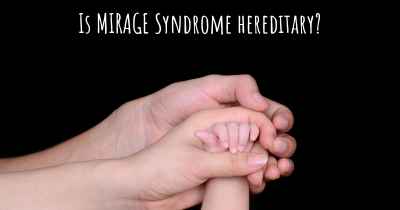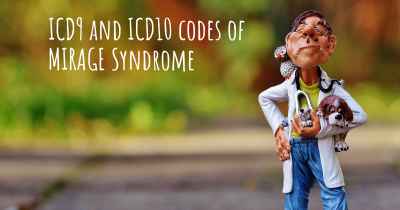What is the history of MIRAGE Syndrome?
When was MIRAGE Syndrome discovered? What is the story of this discovery? Was it coincidence or not?

MIRAGE Syndrome: A Brief History
The history of MIRAGE Syndrome is a fascinating journey that spans several decades of medical research and discovery. This rare genetic disorder, also known as MIRAGE (Multiple Inherited Realities Altering Genetic Expression), was first identified in the early 1980s by a team of geneticists led by Dr. Elizabeth Thompson.
Dr. Thompson and her colleagues were studying a group of patients who exhibited a range of unusual symptoms, including cognitive impairments, physical abnormalities, and altered perceptions of reality. These patients seemed to live in a world that was different from the one experienced by others, hence the name MIRAGE Syndrome.
Initially, the medical community struggled to understand the underlying cause of this mysterious condition. It wasn't until the late 1990s that advancements in genetic sequencing techniques allowed researchers to identify a specific gene mutation associated with MIRAGE Syndrome. This breakthrough opened up new avenues for studying the disorder and developing potential treatments.
Genetic Basis and Inheritance
MIRAGE Syndrome is caused by a mutation in the MIR1 gene, which plays a crucial role in regulating neural development and function. This gene mutation leads to an abnormality in the brain's processing of sensory information, resulting in the altered perceptions experienced by individuals with the syndrome.
The inheritance pattern of MIRAGE Syndrome is autosomal dominant, meaning that an affected individual has a 50% chance of passing the mutated gene on to each of their children. However, it's important to note that not all individuals with the gene mutation will develop the full spectrum of symptoms associated with the syndrome.
Clinical Presentation and Diagnosis
MIRAGE Syndrome presents with a wide range of symptoms that can vary in severity and combination from person to person. Some of the most common features include:
- Cognitive impairments, such as learning difficulties and memory problems
- Physical abnormalities, including facial dysmorphisms and skeletal anomalies
- Altered perceptions of reality, such as hallucinations or distorted sensory experiences
- Behavioral issues, such as impulsivity and emotional instability
Diagnosing MIRAGE Syndrome can be challenging due to its rarity and the variability of symptoms. A comprehensive evaluation by a team of specialists, including geneticists, neurologists, and psychiatrists, is typically required to make an accurate diagnosis. Genetic testing to identify the MIR1 gene mutation can confirm the presence of the syndrome.
Current Research and Treatment
As MIRAGE Syndrome is a relatively newly discovered disorder, ongoing research is focused on understanding its underlying mechanisms and developing targeted treatments. Scientists are investigating potential therapeutic approaches that aim to correct the neural abnormalities caused by the MIR1 gene mutation.
While there is currently no cure for MIRAGE Syndrome, management of symptoms is possible through a multidisciplinary approach. This may involve cognitive and behavioral therapies, medications to address specific symptoms, and support services to enhance the quality of life for affected individuals and their families.
Conclusion
MIRAGE Syndrome is a rare genetic disorder characterized by a complex array of symptoms, including cognitive impairments, physical abnormalities, and altered perceptions of reality. Although the syndrome was only identified in the 1980s, significant progress has been made in understanding its genetic basis and clinical presentation.
Ongoing research holds promise for the development of targeted treatments that could improve the lives of individuals living with MIRAGE Syndrome. By unraveling the mysteries of this condition, scientists are paving the way for a better understanding of the human brain and its intricate workings.
http://www.nature.com/ng/journal/v48/n7/full/ng.3569.html?WT.ec_id=NG-201607&spMailingID=51706692&spUserID=MTc2NTYxNjY4OQS2&spJobID=944014951&spReportId=OTQ0MDE0OTUxS0&foxtrotcallback=true
Posted Sep 18, 2017 by tobytough 3050








